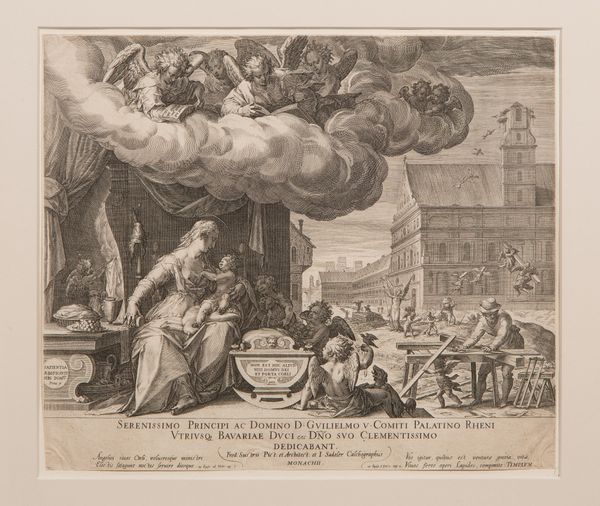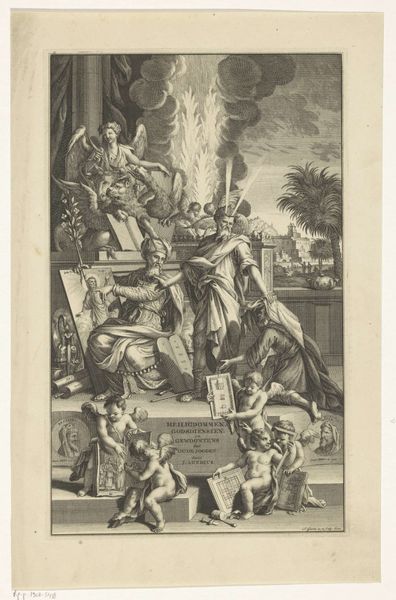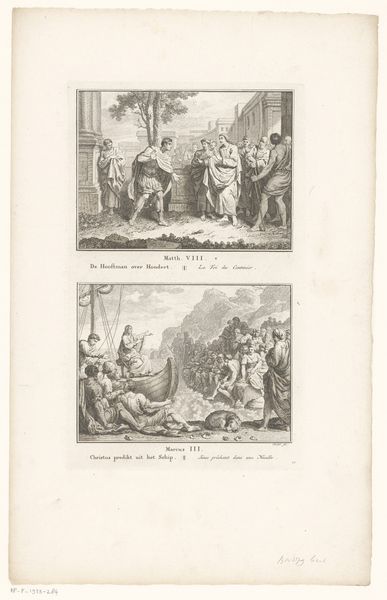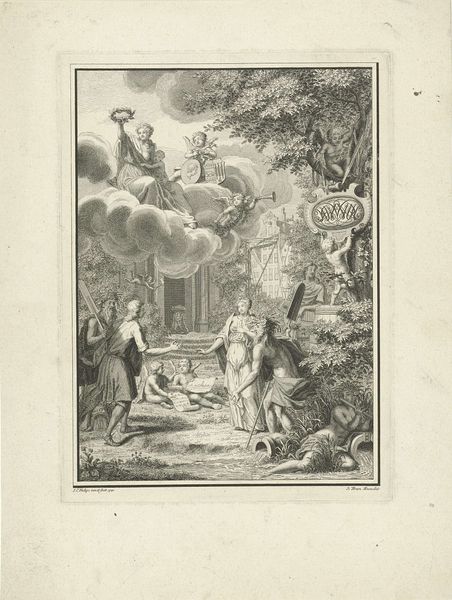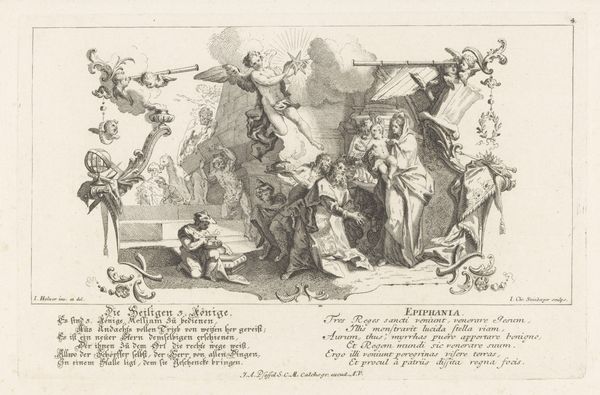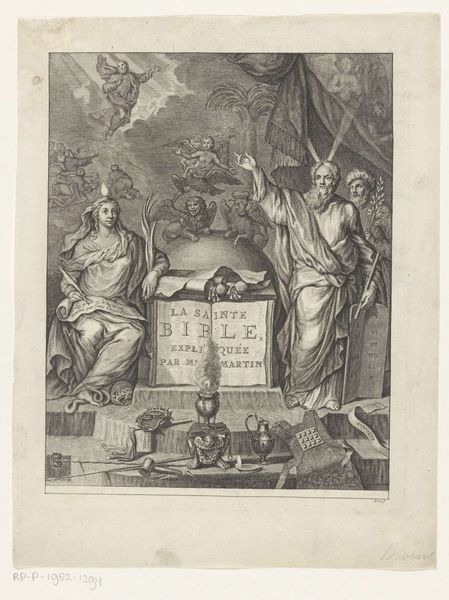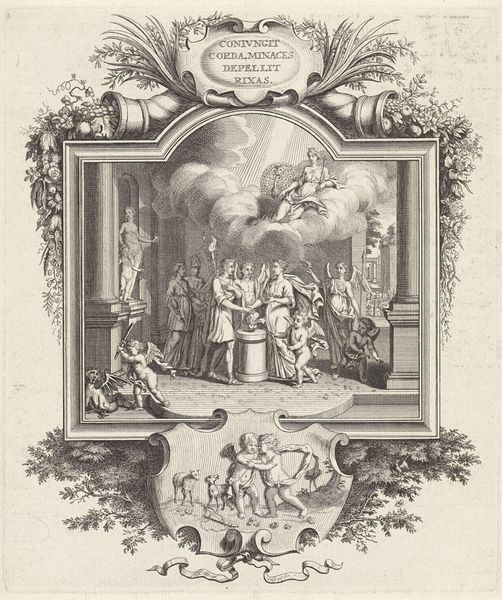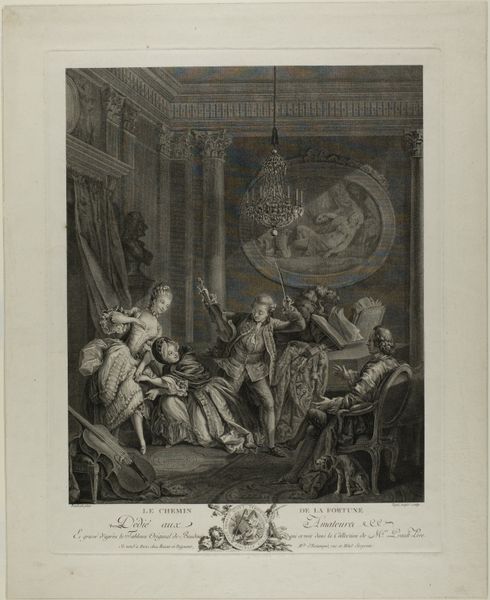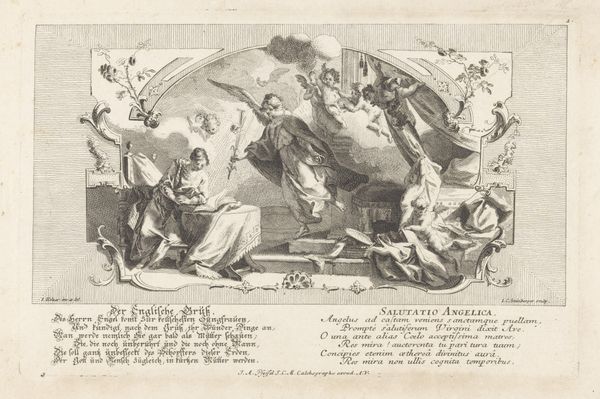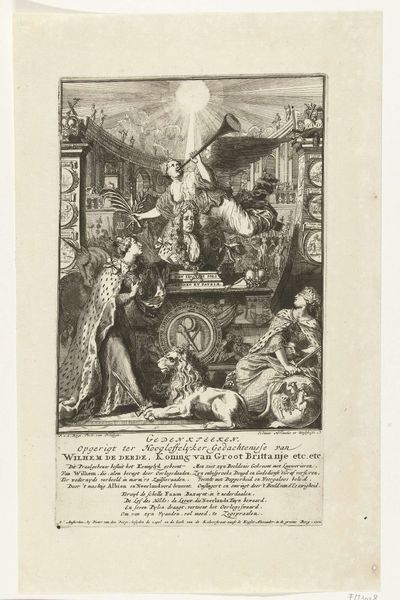
print, engraving
#
aged paper
#
allegory
#
baroque
# print
#
old engraving style
#
landscape
#
history-painting
#
engraving
Dimensions: height 377 mm, width 271 mm
Copyright: Rijks Museum: Open Domain
Curator: Oh, this piece immediately strikes me as a spectacle of despair. The dense, theatrical composition is overwhelming. Editor: We're looking at "The Death of Dido," a 1758 engraving by Simon Fokke, housed here at the Rijksmuseum. It depicts a scene from Virgil’s Aeneid, but Fokke cleverly reframes it through a distinctly Dutch lens. Curator: Dutch, indeed! Note how the artist contrasts the classic narrative of Dido's demise with a burlesque rendering. It feels very pointed. Are we supposed to take this seriously? Editor: Exactly! This engraving isn't a straightforward illustration. It uses the well-known story of Dido to comment on contemporary society, specifically the elite classes and their lavish lifestyles. See how Dido is dressed in elaborate, almost comical, Dutch attire. Curator: Yes, there’s a clear theatricality at play with those observing Dido’s dramatic exit from the window in the background. Also the inclusion of classical figures emerging out of smoke... This use of iconography creates a multi-layered effect; tragedy is presented as farce. Editor: That is the intention, to mock the pretenses. And consider how the engraving itself, as a mass-produced print, democratizes a scene previously confined to paintings for the wealthy. It brings the critique of the elite directly to the public. Curator: I can see a faint suggestion of cupid standing close to Dido's bed of fire—that feels so loaded! This reminds us about the original narrative of lovesickness and abandonment that underlies Dido's actions. It's a shame. But even he seems somewhat…ironic. Editor: Fokke certainly leaves no stone unturned in his satire. The exaggerated poses and over-the-top scenery add to the sense of playful mockery. It challenges the audience to question not only the characters within the image but also the societal norms they represent. Curator: The weight of symbolism and parody here invites closer looking. It reflects how we negotiate cultural identity through the lens of classical stories. Editor: Indeed, a brilliant social commentary cloaked in the guise of classical tragedy.
Comments
No comments
Be the first to comment and join the conversation on the ultimate creative platform.
